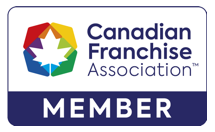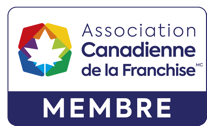What are efforts standards?
Best Efforts, Reasonable Efforts, Commercially Reasonable Efforts (all “Efforts Standards”). In commercial contracts, these terms are often read and used interchangeably and, more often than not, their meanings are overlooked or ignored. Under Canadian law, however, the language used to describe a particular Efforts Standard often indicates a specific meaning or level of effort that may not align with the expectations of contracting parties who are unfamiliar with the law. While Canadian common law has tried to give these terms distinct, differing meanings, there is push back from some sources that disagree with assigning different meanings to such terms in the interests of eliminating potential sources of confusion and logical inconsistency.
The risk of misunderstanding and when are efforts standards used?
Efforts Standards are used when a contract provides for a party to complete a specific goal, and fulfilling that goal is not entirely within that party’s control. For example, a landlord undertakes to obtain specific zoning approvals for a location before a tenant begins a lease. In this example, securing zoning approvals for a location is not entirely within the landlord’s control and, as a result, it is prudent for the landlord not to promise that it will unconditionally undertake the achievement of the goal.
Drafting lawyers often hedge the risk associated with such obligations with a modifier as to the level of effort a party must undertake to ensure a specific goal, that cannot be guaranteed, is achieved. It is common to see a dizzying array of combinations of these Efforts Standards including:
- reasonable efforts;
- best efforts;
- commercially reasonable efforts;
- every reasonable effort or all efforts; and,
- every conceivable combination of the above.
It is understandable how parties can confuse or have differing expectations of meaning, or simply gloss over these terms and not realize that they may be interpreted to have a different meaning by others or the courts.
What does it all mean?
The common Canadian convention goes something like this: best efforts is more onerous than reasonable efforts and commercially reasonable efforts[1], even less so.
The leading Canadian case on best efforts comes from the British Columbia Supreme Court in Atmospheric Diving Systems Inc. v. International Hard Suits Inc. In that case, the phrase best efforts was held to impose a higher obligation than reasonable efforts and that best efforts means taking, in good faith, all reasonable steps to achieve the objective in good faith, carrying the process to its logical conclusion and leaving “no stone unturned”. This case has been cited in Ontario for this same proposition as recently as 2019. The question becomes: if best efforts requires “all reasonable steps to be taken”, how is that any different from reasonable efforts? Both stand on the same foundation of the objective standard of reasonableness, so the distinction in level of effort between these phrases starts to seem arbitrary.
In another often-cited case Eastwalsh Homes Ltd v Anatal Developments, an Ontario court defined best efforts as not meaning second-best efforts but requiring the requisite party to leave “no reasonable stone unturned to discharge its duty”. The court accepted that this definition required “first-class” efforts as opposed to “second-class” efforts. However, the court qualified that the duty does not require the party to sacrifice itself totally to the economic interests of the party to whom the duty is owed, while the interests of the other party must predominate. How one distinguishes “first-class” efforts from “second-class” efforts any better than best efforts from reasonable efforts is entirely unclear. As is common in Canadian case law on this subject, the court is substituting vagueness with more vagueness.
The “no stone unturned” metaphor tends to be the shorthand used by lawyers and judges when discussing best efforts obligations, using a vague metaphor to describe a vague phrase. Does the Canadian approach make sense?
A prominent American commentator on clear contract drafting, Kenneth Adams, takes issue with the Canadian approach in his text A Manual of Style for Contract Drafting – Fourth Edition.[2] Mr. Adams, in my opinion, does an excellent job of cutting through the “it-is-because-it-is” logic and “common convention” that many lawyers, judges and other commentators insist upon when trying to convince themselves and others of real differing meanings to these terms. In the end, there is a dizzying array of case law and commentary in Canada and elsewhere trying to impute some meaning to these vague terms, often trying to explain these vague terms with other vague terms like reasonableness, good faith and diligence, as Kenneth Adams points out in his text.[3]
How can you protect yourself?
Practically, the reader or drafter of a contract should know the connotation that these words may impute and that they may be interpreted by reasonable people and courts in unpredictable ways. If a matter is sufficiently important, relying merely on such vague phrases is not a prudent approach. Sufficiently important obligations are often better served by setting out detailed guidelines of unconditional obligations that the parties actually have control over so that the parties can follow those unconditional obligations that move a matter towards its final objective, rather than relying on confusing, inconsistent or outdated interpretations of a vague phrase or metaphor. When in doubt, parties should ask: “What is actually expected of me, and is this clearly explained in our agreement?”
At Mills & Mills LLP, our lawyers regularly help clients with a wide range of legal matters including business law, family law, real estate law, estate law, employment law, health law, and tax law. For over 130 years, we have earned a reputation amongst our peers and clients for quality of service and breadth of knowledge. Contact us online or at (416) 863-0125.
[1] While the phrase commercially reasonable efforts is an interesting additional twist, which some Canadian courts have interpreted differently, it will not be discussed in detail in this post.
[2] Kenneth Adams, A Manual of Style for Contract Drafting, 4th ed, (Chicago: ABA Publishing, 2017).
[3] Ibid at para 8.74.

 2 St Clair Ave West
2 St Clair Ave West


